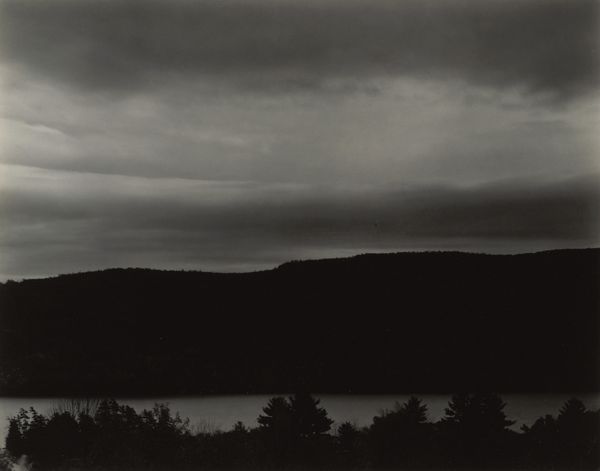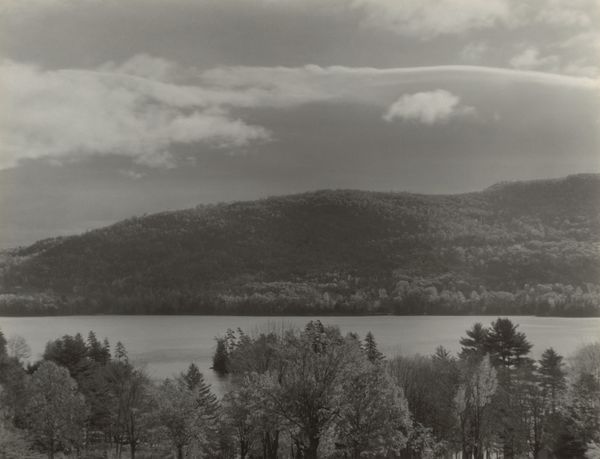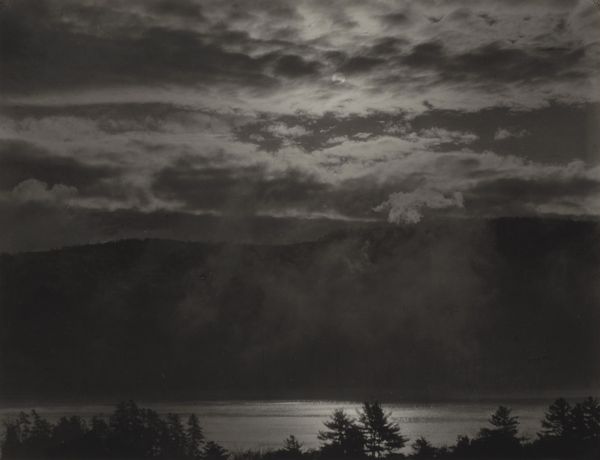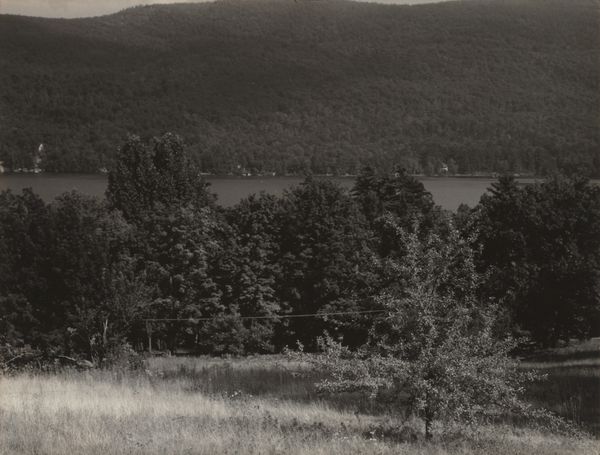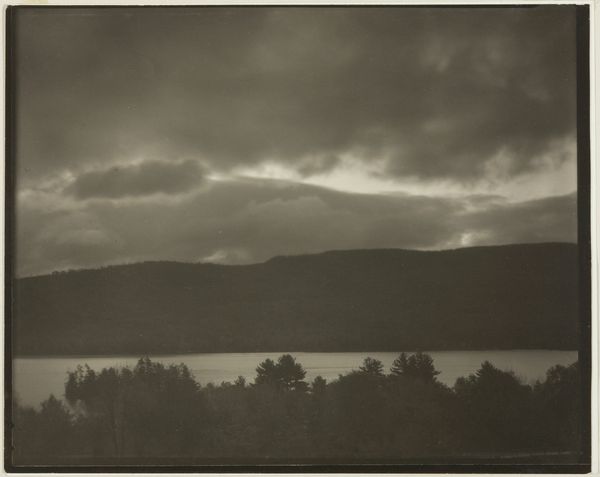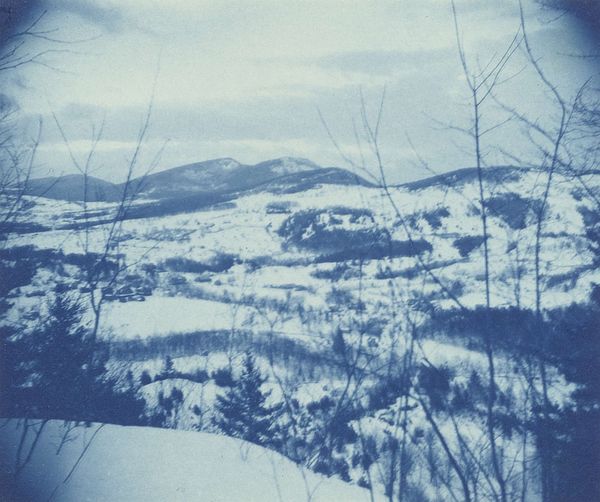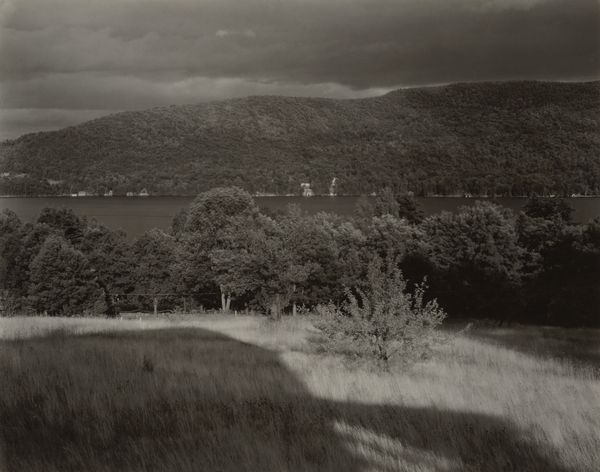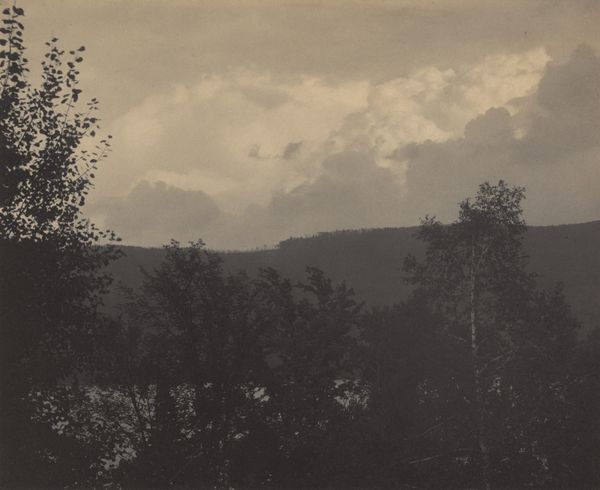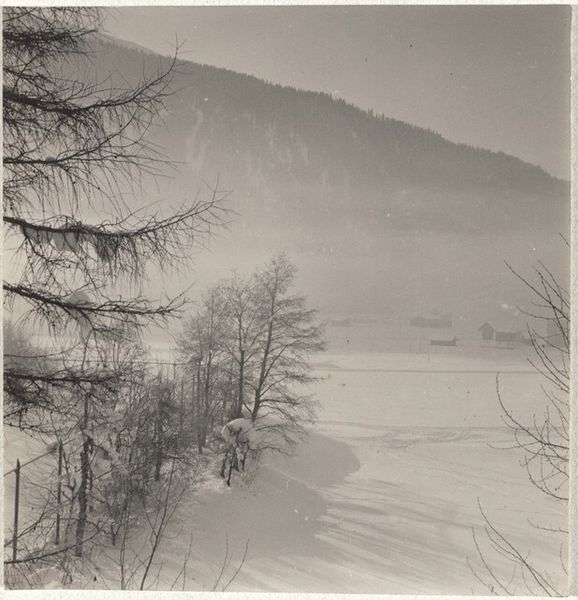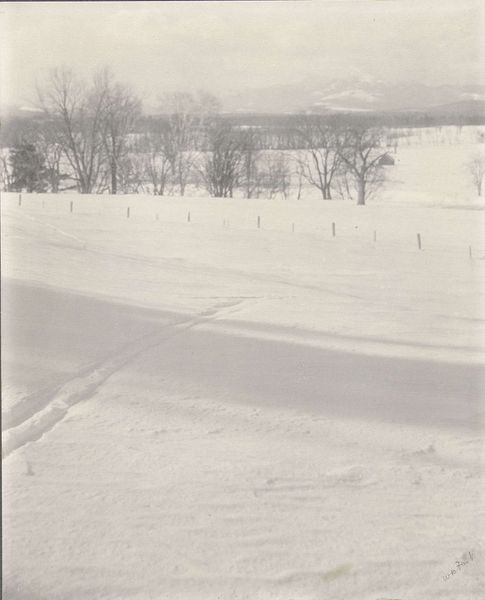
Dimensions: sheet (trimmed to image): 19.1 x 23.9 cm (7 1/2 x 9 7/16 in.)
Copyright: National Gallery of Art: CC0 1.0
Editor: This is "Lake George," a gelatin-silver print created by Alfred Stieglitz in 1923. It has such a serene and quiet mood. The monochrome and composition guide my eye from the snow-covered trees to the dark mountains and dreamy sky. What catches your eye? Curator: My attention is drawn to the materiality of the gelatin-silver print itself. Consider Stieglitz's control over the photographic process, the darkroom alchemy involved in coaxing this tonal range from the chemicals. This wasn't simply snapping a picture. Editor: So, you're less focused on the landscape depicted and more on the craft? Curator: Precisely. We should analyze the cultural perception of photography at this time. Stieglitz battled to have photography recognized as high art, not just documentation. Look at the choices he made in printing to emphasize texture, to challenge the machine-made association of the medium. He's using industrial materials, but crafting something deeply personal and expressive. What do you think about how he manipulated the materials available to him? Editor: I never thought about the effort involved! I’ve only thought about what I’m seeing – and enjoying the quiet of the image. Curator: The “quiet” is actively produced through Stieglitz’s labor and his material choices. He isn’t passively recording; he is shaping meaning through his manipulation of the photographic process. This brings forward a broader commentary about the nature of representation and artistic agency. Editor: I’m really grateful for that perspective. I tend to see photography as more objective, but hearing you makes me want to learn more about Stieglitz’s process. Curator: And understanding that process lets us appreciate not just what's *in* the image, but how it came to be. Materiality matters.
Comments
No comments
Be the first to comment and join the conversation on the ultimate creative platform.
